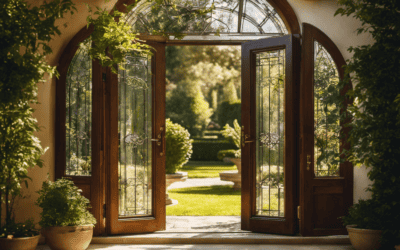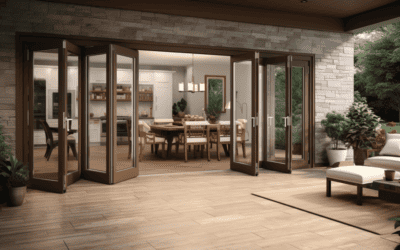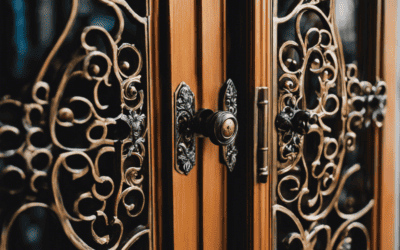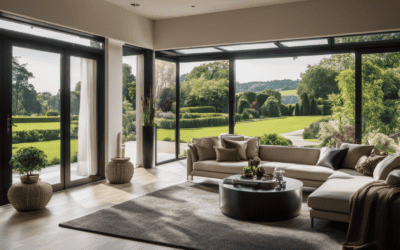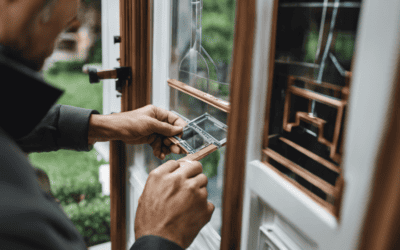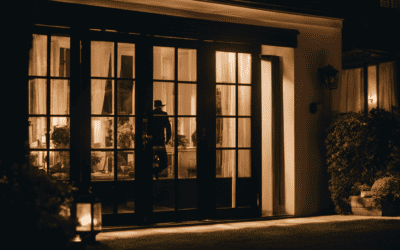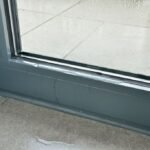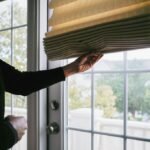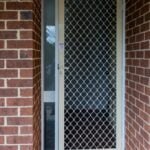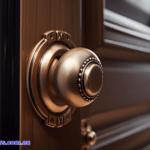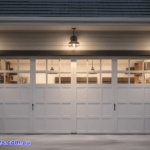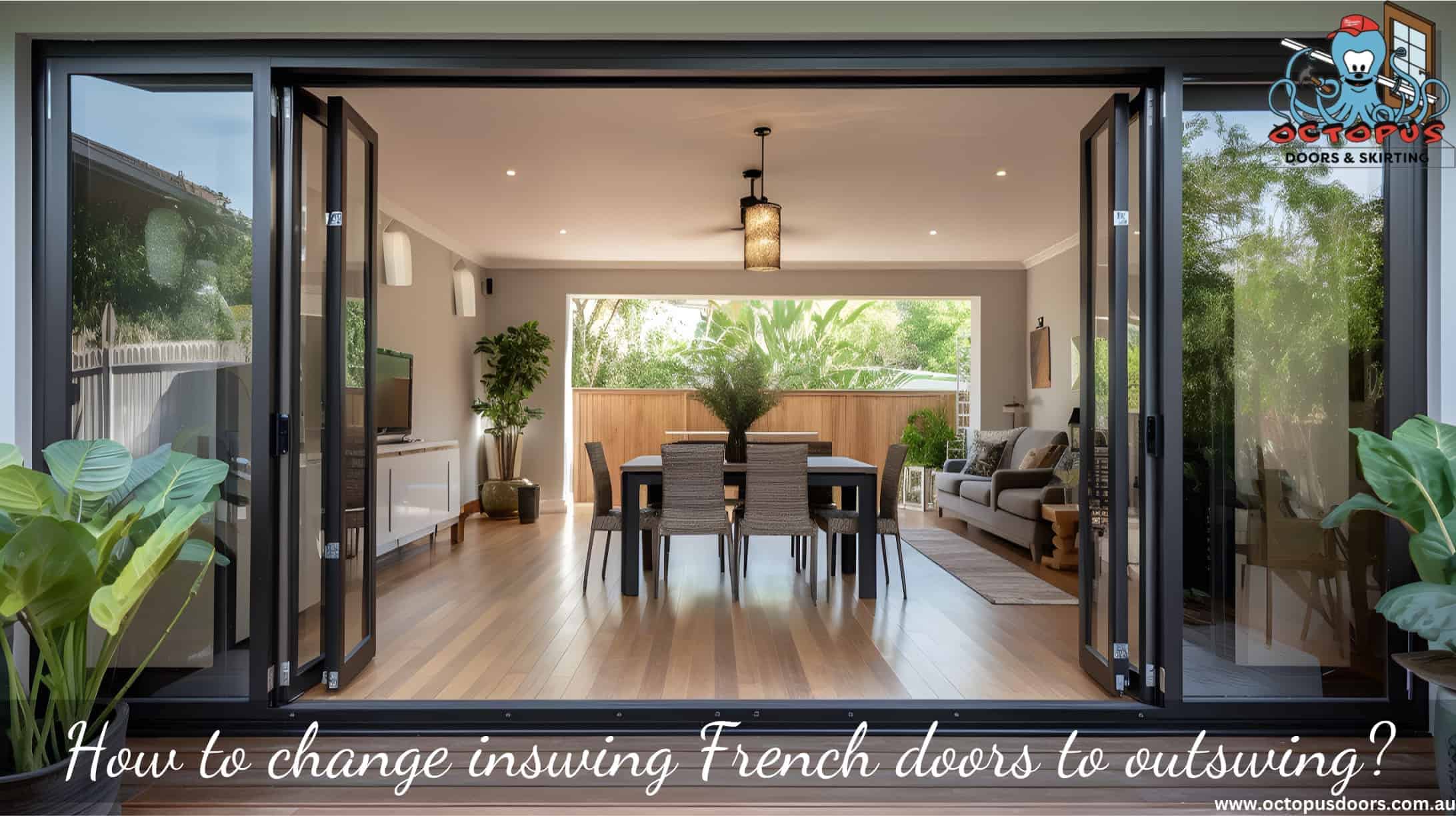
Frustrated with in-swinging French doors? Outswing doors are awesome! They maximize space and let more light into your home.
Get expert advice to quickly and easily convert your entranceways to stylish outswing doors. Learn how today!
Assessing Your Current Door Setup
Check Your French Door Setup
To change in-swing to outswing, first assess your door. Identify in-swing or outswing type and direction. Check if enough clearance for new swing direction, hardware, and weatherstripping. Measure dimensions for proper fit.
Check Unique Details
Don’t forget to check unique details that may affect conversion. Check door jamb, sill, and hinge placement. Make sure exterior siding or interior walls won’t be damaged during alteration.
Surprising Fact
PMQs LLC says swapping in-swing for outswing improves accessibility, visual appeal, and security. Get ready for some DIY! Tools and materials are the keys to converting doors from ‘in’ to ‘out.
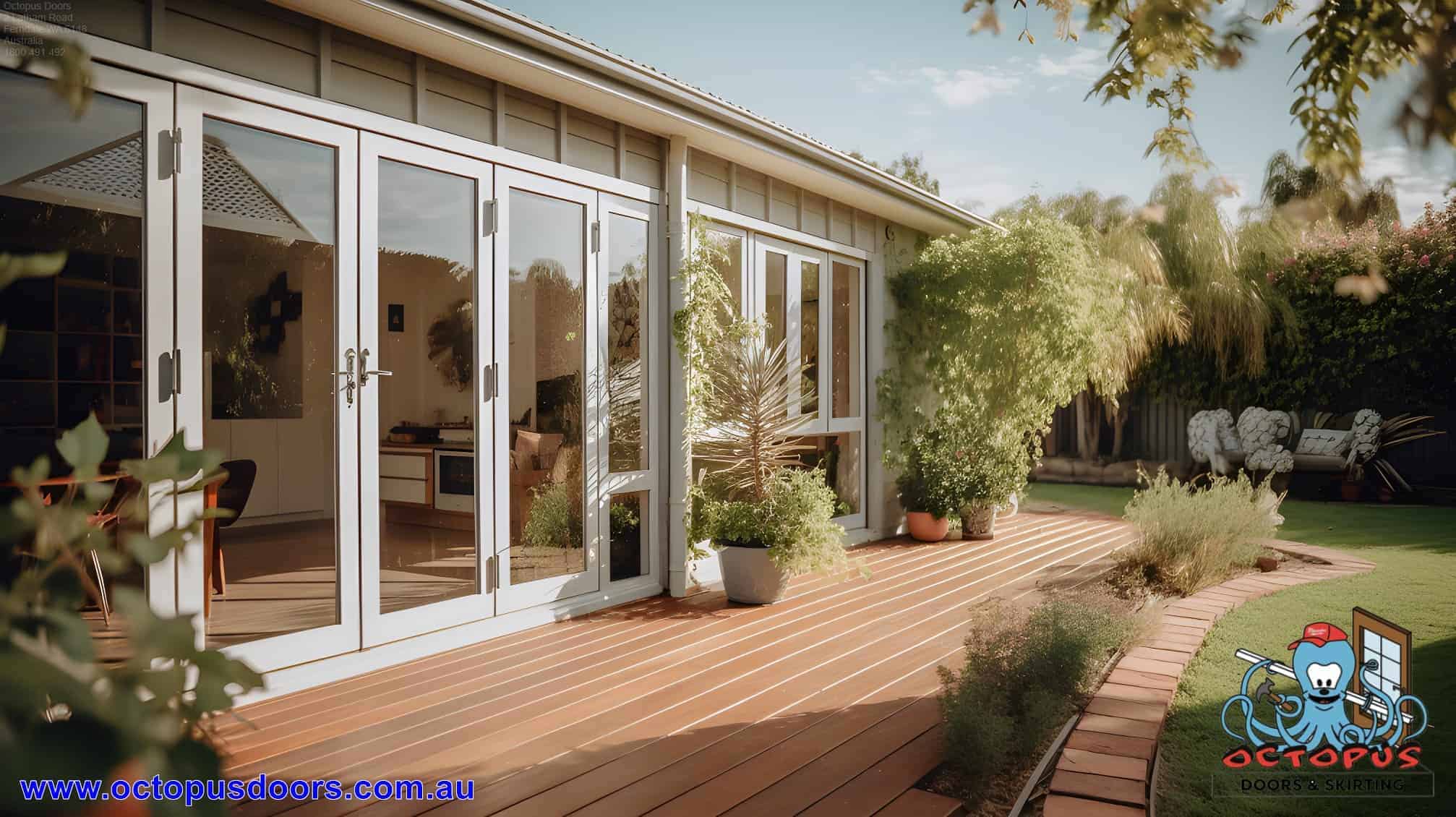
Gathering the Necessary Tools and Materials
To convert inswing French doors to outswing, you need tools and materials. Get them at any home improvement store or online retailer. Here is a 5-step guide on gathering these items:
- Measure the width and height of your current French doors.
- Buy hardware for an outswing door, like hinges, knob/lever sets, deadbolts, strike plates, shims and a threshold.
- Gather tools like screwdrivers, a power drill, a chisel, a hammer, a leveller, a tape measure and safety gear.
- Get foam backer rods, sealant, and a caulk gun to seal gaps between the new threshold and subfloor.
- Purchase exterior trim boards or brick moulding depending on how your home’s exterior is finished.
Check that each item listed works with old hinges before you buy them. Now you are ready to bid farewell to your old French doors and swing in a new direction!
Removing the Existing Door and Frame
To change inswing French doors to outswing, you need to remove the existing door and frame. Follow these five steps for this crucial task:
- Use a pry bar or hammer to remove any decorative trim around the existing door.
- Tap out hinge pins with a hammer and screwdriver to separate the door from its hinges.
- Unscrew or sew off screws or nails holding the doorframe to the wall, then extract the frame.
- If removing the inswing door from its hinges is hard, unscrew all hinges one at a time.
- Detach hinges and pull away the frame to complete the French door disassembly.
Once you’re done, remember that the dismantling process may vary depending on your type of French doors. Gear up with the necessary tools, such as a pry bar, hammer, screwdriver, drill or Sawzall. And if ever you’re unsure about any step, get help from experts. Now, bend over backwards and start DIY-ing!
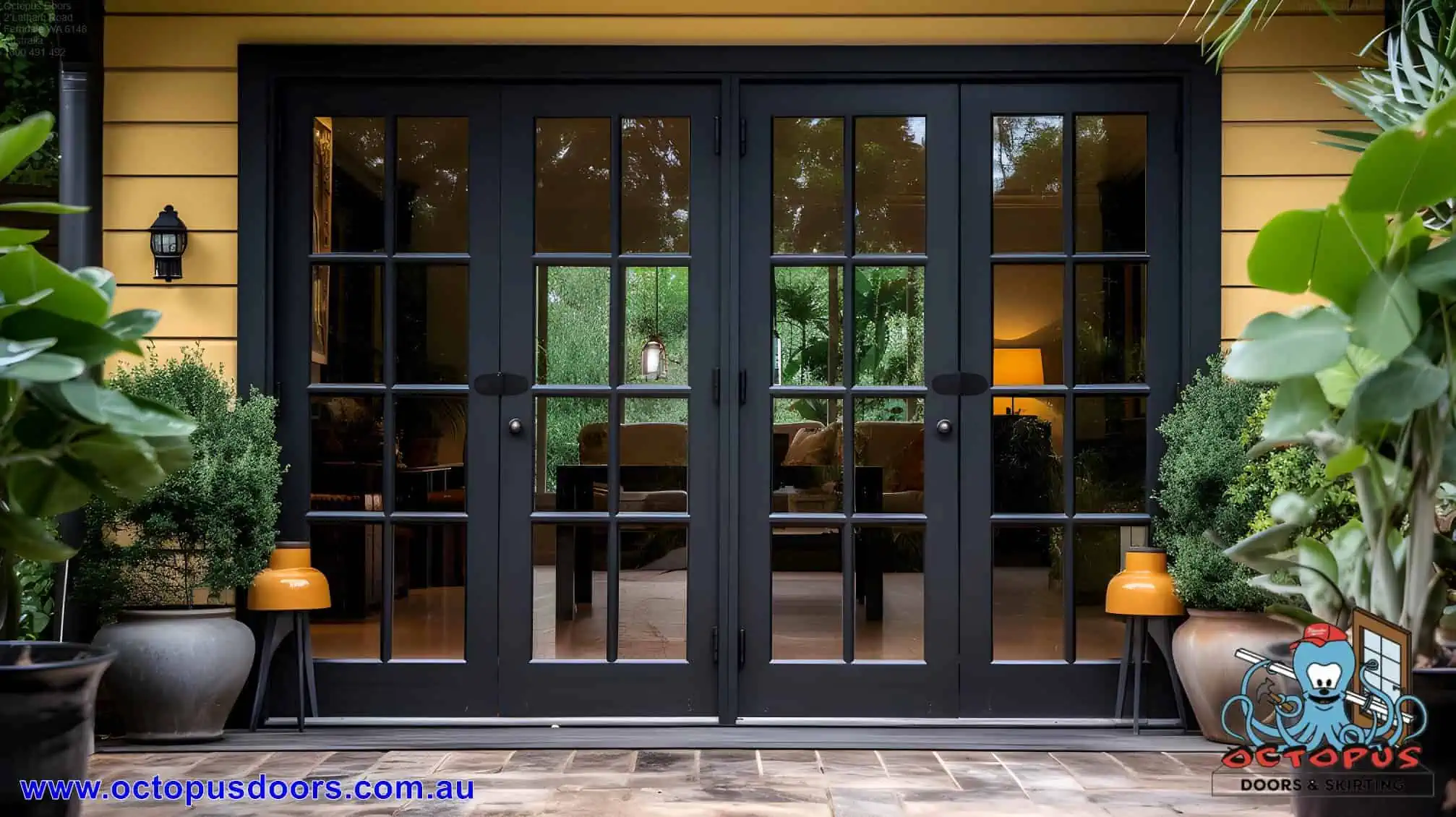
Adjusting the Door Hinges
Transforming an inswing door to an outswing requires adjusting the hinges of a French door. The hinges attach the doors to frames and control their opening and closing. Adjusting the hinges yourself gives you full control over your door’s work. Follow these five steps to adjust the hinges:
- Carefully remove hinge screws from the jamb side of the door.
- Reposition the scrapped hinges along the frame for mounting them on the other side.
- Drill anchor holes into the French door to line up with the hinge fitting plates and fitted screws.
- Ensure everything is secure and create pilot holes for latch screws to be inserted in their original location.
- Adjust any other door hardware, such as strike plates and rim locks, after rehanging the outswing door.
Ensure that any window panes in the door remain unharmed during this process. Seek professional help if you need assistance with hinge modification.
Make a big shift in your home by changing the direction of your French doors! Outward swinging doors add both function and style that will last for years.
Preparing the Doorway for Outswing Installation
Ready to get an outswing door set up? Here are 4 steps to take first:
- Take out the existing inswing French doors and all their hardware.
- Wipe away any dirt or debris from the doorway and check for any structural issues.
- Measure the doorway height, width, and depth and get a new outswing door that fits.
- Attach temporary braces on either side of the doorway to support it during the door’s removal and replacement.
Before setting up your outswing door, make sure you’ve got everything ready. Taking these 4 steps will ensure that your new door fits perfectly. You’ll want to pay attention to clearances around the door in relation to landscaping, patios, or decks. In colonial America, having a grand entrance was a sign of wealth so elaborate planning was key. Get your frame in shape and your threshold straight, it’s time to flip those doors and outswing your fate!
Installing the New Frame and Threshold
Changing your inswing French doors to outswing requires precision and time. To install the new frame and threshold assembly:
- Remove the old door frame: Carefully unscrew the hinges, then pry off the trim with a hammer and chisel.
- Prepare the doorway: Clear out any debris or obstructions.
- Fit in the new door frame: Insert the frame into place, then secure with screws.
It is important to measure the doorway opening precisely to ensure the new threshold is installed securely. Improper threshold placement can lead to water infiltration, wood decay, flooring damage, and molding distortions. This could result in extra costs and downtime. Switching to outswing doors may be awkward, but it’s necessary for a better future.
Attaching the Outswing Doors
To attach outswing doors, you need to follow the steps for secure installation. Ensure you have the necessary materials and tools beforehand.
- Fix the hinges to the frame by drilling pilot holes and then screwing them in.
- Lift or slide the door in at an angle, making sure it sits flush.
- Attach and fasten the hinges to the door with screws. Open and close the door several times to check it operates smoothly.
Following these steps, your outswing French doors should be attached securely.
Remember, outswing doors require special attention when mounting because they open outward. It is important to use suitable materials and strategies for attaching.
Convert your inswing French doors to outswing today. Follow our three-step guide. Enjoy hassle-free access to your home! Seal and weatherproof the doorway to keep your home cosy and dry.

Sealing and Weatherproofing the Doorway
Secure your doorway and protect your property from environmental elements by correctly insulating the door. To do this, select an exterior door seal designed to withstand harsh weather. Then, clean the surface and cut the seal to size.
Next, attach the seal firmly using adhesive glue and apply pressure to remove any gaps. For extra protection, add weatherstripping to French doors and magnetic strips for a tight seal.
Fill any visible cracks with chalking or foam and create an entrance barrier to divert flooding away from the door. By following these sealing methods, you’ll improve your home’s entrance protection and energy efficiency. Don’t let poor sealing compromise your home’s safety – install seals today! Now, spin that door like a Beyblade.
Adding Finishing Touches
Ready for Door Décor?
You’ve swapped your inswing French doors for outswing. Time for the final touch! Finishing work is key for adding value and making the door look great.
Polish, adjust, and add decorations. Paint to add life or upgrade handles with modern styles. Weatherstripping seals along edges and vertical jamb will help keep air out.
Give your outswing doors TLC: Tender Loving Care, not just tightening of components.
Proper Maintenance for Long-lasting Outswing Doors
For long-lasting outswing doors, regular care is essential. Checkups, cleaning, and upkeep are all important. Preserve hardware finishes and weatherstripping. Make sure proper sealing is in place. Lubricate hinges yearly and firmly secure screws. Replace door sweeps every five years or as needed, to prevent air leakage. The same care should be taken for French doors.
Here’s a fact: Good maintenance can add 10 or more years to a door’s lifespan (source: Home Guides).
Transform Your Inswing French Doors to Outswing Effortlessly
Converting your inswing French doors to outswing is a straightforward process that can significantly improve the functionality and aesthetics of your living space.
By following the steps outlined in this guide, you can transform your doors in no time, allowing for enhanced usability and a refreshed appearance.
As an added bonus, outswing French doors often provide improved safety and energy efficiency, making this switch an excellent investment.
Don’t hesitate to embark on this DIY project and revel in the newfound convenience of your outswing French doors!
Frequently Asked Questions
Can all inswing French doors be easily converted to outswing?
No, it will depend on the construction and design of the specific door. Some doors may not be able to convert or may require significant modification.
Why would someone want to change inswing French doors to outswing?
There are several reasons. Outswing doors provide more security, better weather protection, and more space inside the room as the door swings outward.
How complicated is it to change inswing French doors to outswing?
It is a complex project that requires significant skill and knowledge of door installation. It is recommended to hire a professional installer to ensure proper installation and avoid any potential safety hazards.
How much does it cost to change inswing French doors to outswing?
The cost will depend on the size and style of the door, as well as the complexity of the installation. It can range from a few hundred to a few thousand dollars.
Will changing my inswing French doors to outswing affect the look of my home?
It may slightly change the appearance of your exterior, but it can also add new elements of style and increase the overall value of your home.
How long does it take to change inswing French doors to outswing?
The timeframe will depend on the complexity of the project, but it usually takes several hours to a full day to complete the installation.
Related Articles:
Do French Doors Use Tempered Glass
We know what you might be thinking - do French doors need tempered glass? The answer is a resounding yes! Like any other doors in buildings, French doors must use tempered glass for safety reasons. Tempered glass is solid and breaks into harmless pieces, making it...
How Long Do Wood French Doors Last With Glass
Did you know that French wood doors with glass can last for a significant amount of time if they are made from rot-resistant wood species and properly maintained? These elegant doors can add a touch of timeless beauty to any home. In this article, we will explore the...
Are Bifolds More Expensive Than French Doors
Imagine standing at the threshold of your dream home, trying to decide between bifold and French doors. As we delve into whether bi-folds are more expensive than French doors, let us guide you through the intricacies and considerations that come into play. From the...
Do Roller Blinds Work On French Doors
Sick of battling the sun every time you open your beautiful French doors? Welcome to the club. Those gorgeous panes of glass let in tons of natural light but can turn your home into a sauna on hot days. Not to mention, privacy goes out the window (literally!) Luckily,...
What Is Standard Size For French Doors In Feet
Looking to open up your home and let the light pour in? French doors are a popular choice for creating an airy, inviting atmosphere. With their characteristic large glass panes and narrow stiles, these glazed double doors evoke European charm. But before picking out...
Can a French Door Be Transported Standing up
Have you ever tried transporting French doors standing up? It may seem risky, but it's a safe and effective method if done correctly. By using securing straps and supports, we can ensure that the doors remain stable and protected during transportation. Following the...
What Hardware Do You Put on French Doors
Securing and styling French doors requires careful consideration. From flush bolts and dummy sets to handles and knobs, we'll guide you through selecting the perfect hardware for a secure and stylish look. With innovation in mind, we'll explore the balance of...
Are Bifolds More Expensive Than French Doors
Imagine standing at the threshold of your dream home, trying to decide between bifold and French doors. As we delve into whether bi-folds are more expensive than French doors, let us guide you through the intricacies and considerations that come into play. From the...
Can French Doors Be Made to Measure
We've got you covered when finding the perfect French doors. You might be wondering, can French doors be made to measure? Well, the answer is a resounding yes. With custom-made French doors, you can achieve a perfect fit that complements your space. Every detail...
How Do Burglars Break Into French Doors
Due to their elegant design and glass panels, French doors are popular with homeowners. However, it's important to recognize that they can also be a vulnerable burglar entry point. You might think, 'Can't I rely on the traditional locking mechanisms?' Unfortunately,...
Message Us
Get In touch below. Ask Any Question or Start a Free Quote
Call Us
1800 491 492
I'm James Davis, a carpenter with eight years of experience in carpentry services, repairs, installations, renovations, and maintenance of interior doors. I have a diploma in carpentry and joiner trade from the Education Skills Australia Institute and take pride in delivering high-quality results to ensure customer satisfaction. I'm a blog writer for Octopus Doors Company and enjoy sharing my knowledge and tips on maintaining security measures and choosing the right door materials, paints, or handle styles. I specialize in custom-made interior doors and strive to make every home look fabulous. Contact me anytime for help with door-related issues.


